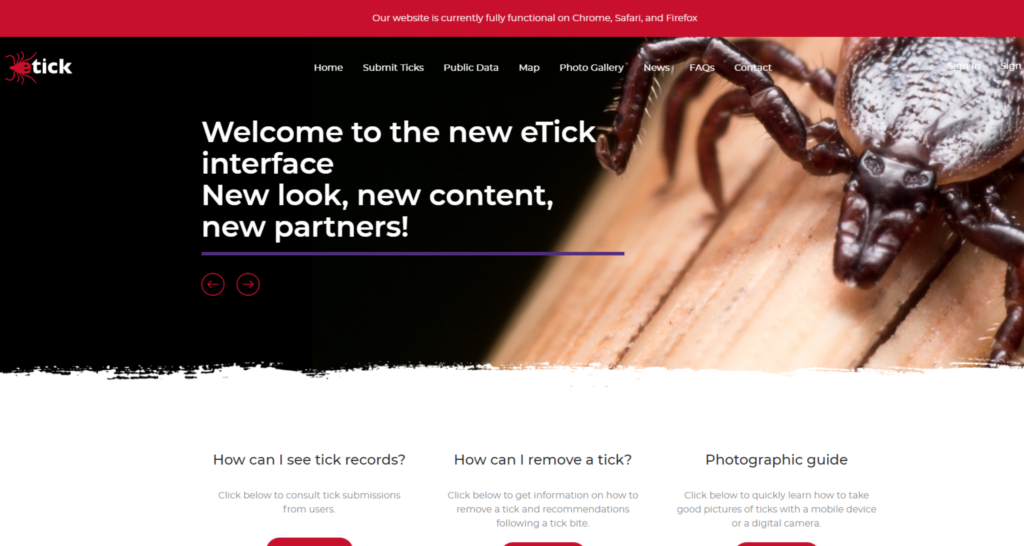
The citizen science project eTick.ca (hosted by Bishop’s University) is a public platform for image-based identification and population monitoring of ticks in Canada that invites the public to participate by submitting tick photos, whether on animals or humans, for identification by a professional.
All tick records submitted by eTick users automatically appear in real time on an interactive map on their website. On this map you can examine the pictures and submission details from a specific record or consult a set of records by filtering submissions by geographical area, tick species, date, or host type.
Access to eTick.ca is free and it is not necessary to contribute data in order to consult the database. Please note that eTick.ca is not meant to provide medical advice regarding Lyme disease infections for persons who have found a tick, but can inform members of the public of whether additional inquiries with health care professionals are warranted depending on the species of tick found.
For more information about this public platform project: Bishop’s University’s Dr. Jade Savage Launches Etick.ca, A Tick Identification and Monitoring Website
Protect yourself and your family members and animals:
The best way to protect against Lyme disease is to prevent tick bites. Here are some ways to protect yourself:
- Shower or bathe within two hours of being outdoors to facilitate a prompt tick check and to remove ticks that have not attached yet.
- Do a daily full-body check for ticks on yourself and your children, especially in the hair, under the arms, in and around the ears, inside the belly button, behind the knees, between the legs and around the waist.
- If you find an attached tick, remove it with tweezers immediately. Removing it within 24-36 hours can help prevent infection.
- Wear light coloured long-sleeved shirts and pants to spot ticks more easily. Tuck your shirt into your pants and pull your socks over your pant legs.
- Walk on cleared paths or walkways.
- Use bug spray containing DEET or Icaridin on your skin and clothing (always follow label directions).
- Do a tick check on your outdoor gear and your pets as they could carry ticks inside your home.
- Put dry outdoor clothes in a dryer on high heat for 10 minutes to kill any remaining ticks. If you need to wash your clothes first, hot water is recommended.
- If the clothes cannot be washed in hot water, tumble dry on low heat for 90 minutes or high heat for 60 minutes.
Additional Resources
- Health Canada’s Lyme Disease Prevention Toolkit online
- Canadian Lyme Disease Foundation’s Prevention, Diagnosis, and Tick Kit
- Health Canada’s Lyme Disease Awareness video
- Top 10 Tick Hiding Spots on Your Body and Lyme Disease Surveillance in Canada – Health Canada infographics
- Public Health Agency website on Lyme Disease





















